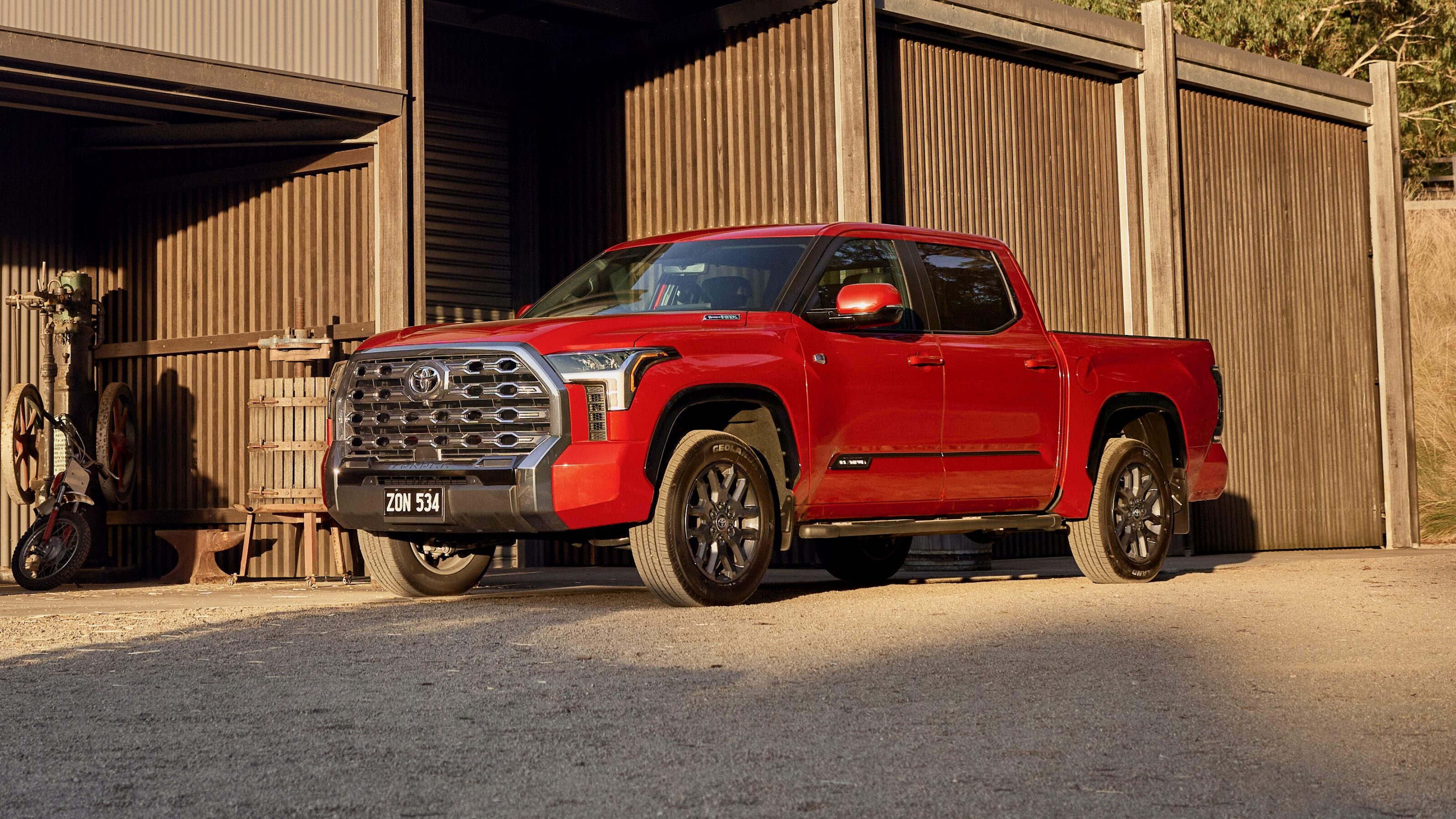Audi’s defining sports car will be no more as the German car maker wheels out the 2024 Audi TT Final Edition – the last iteration of the coupe/roadster that first went in sale in 1999.
The transformative TT’s design and Ingolstadt’s confidence to park it in showrooms spoke volumes of where the car maker was heading – and helped unlock a design-led rise of the four rings that cemented it as an automotive design powerhouse.
Across three generations, the TT Coupe and Roadster helped hone the Audi image after decades of being considered an also-ran to Mercedes-Benz and BMW – but it’s the original 1999 TT that will be remembered most fondly.
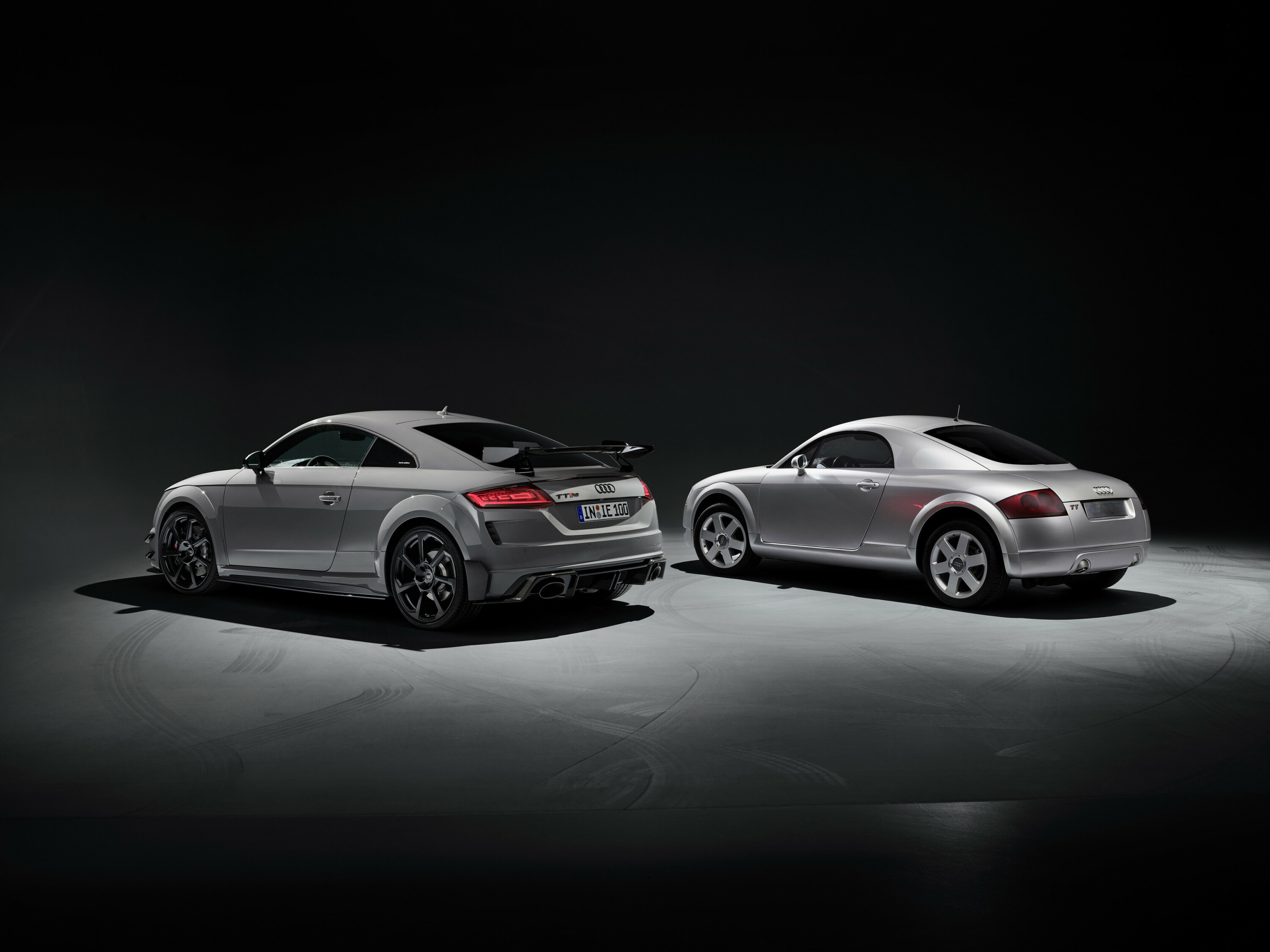
The Audi TT earned its place in automotive design legend by breaking all the rules.
Sports cars are supposed to be aggressive, defined and purposeful, and when the TT concept landed at the 1995 Tokyo Motor Show, its contemporaries were dominated by wedge forms dating back to the 1970s.
Yet the TT looked back even further to evoke 1930s Bauhaus concepts.
Audi’s brand-building breakthrough was designed under the leadership of Hyundai’s now head designer, Peter Schreyer, with Thomas Freeman and J Mays.
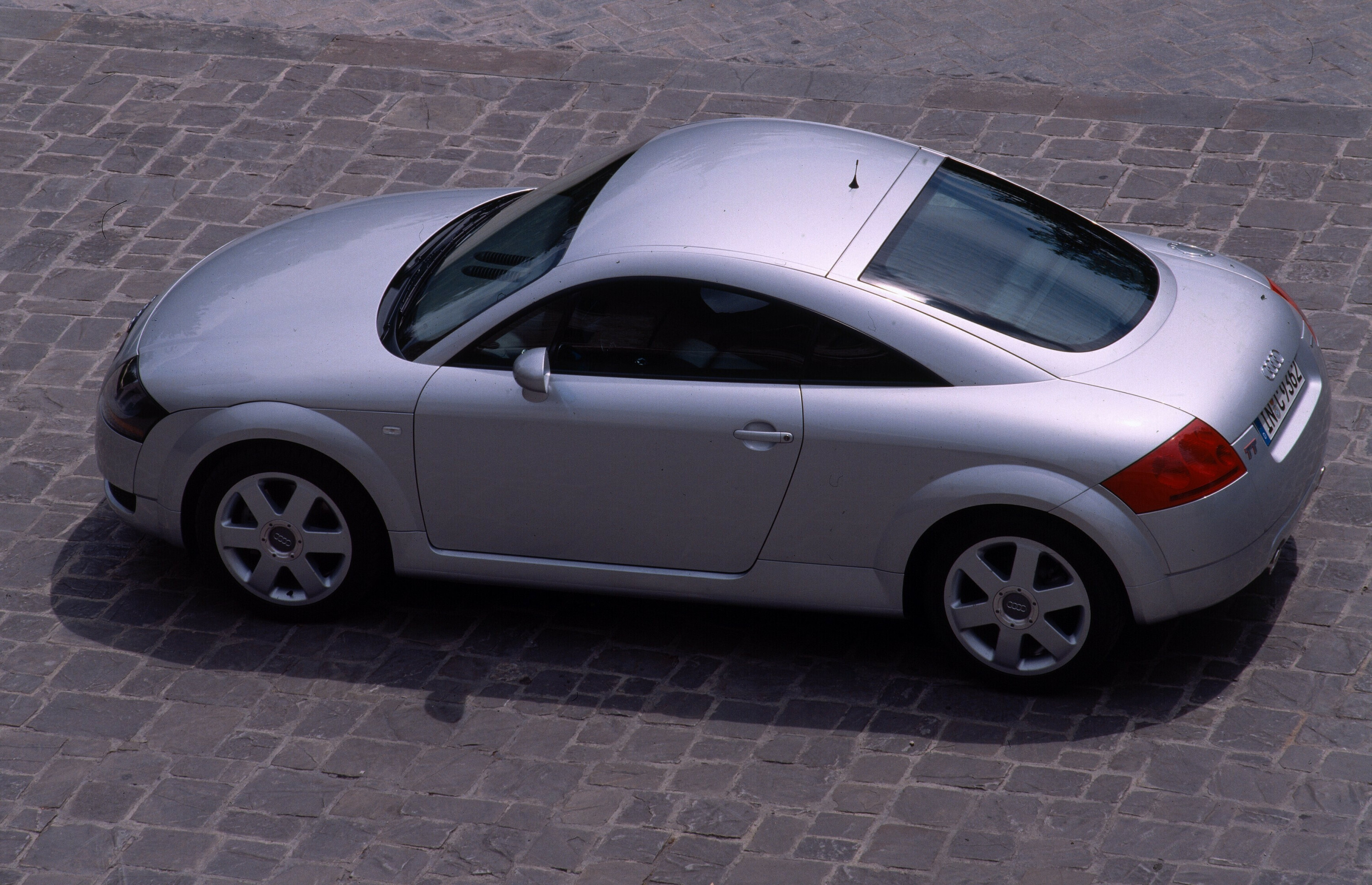
The TT was a concept that was so different, intimately detailed and so un-car like in terms of its design principles that it was shrugged off by many as just that – a fantasy.
It took elements from the 1991 Audi Avus Concept, so named as it paid homage to the Auto Union racers that set records at the near-20km Berlin circuit in the 1930s using both mammoth powerplants and clever aerodynamics – some records it holds to this day.
A stylish Audi Sport Spyder concept was shown in 1991, too, but never made it to showrooms. The TT was for many another design department mufti day before Audi would revert to type and make stylish yet hardy avant-garde sedans and Audi at the time was not the trend setting company it is today – that came from having the guts to build the first-generation TT with few changes to that original concept.
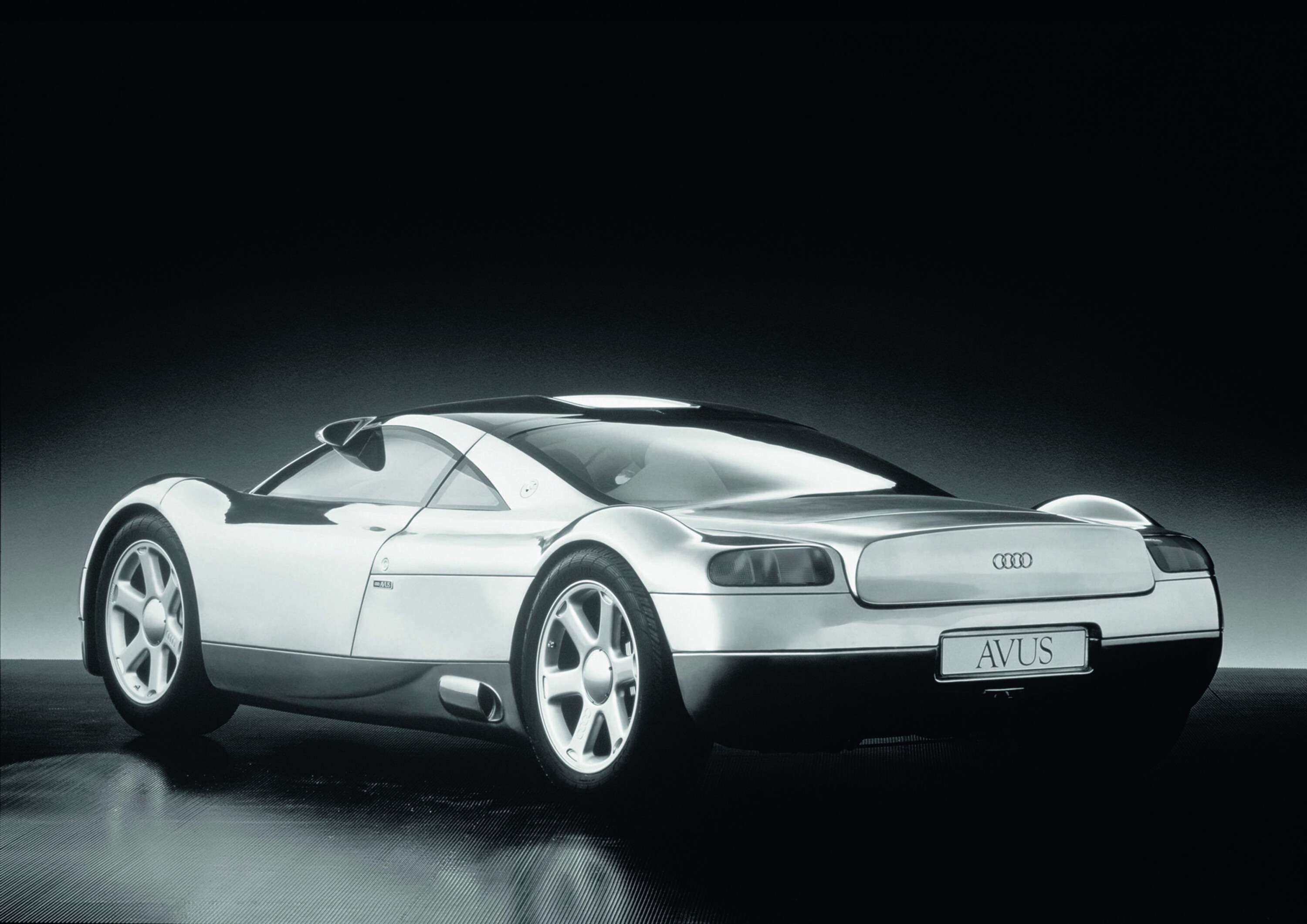
That was ballsy because of its odd execution which did not follow conventional wisdom.
The TT was not a wedge-defined coupe with a low noise and rising waistline. Instead, viewed side on, the TT possessed a perfectly horizontal waistline with two almost symmetrical ends.
The TT did not have a sharp line, crease or jagged edge to speak of, and its symmetrical profile departed from the wedge ideals – this was a car that was not designed how a car should be.
Instead of aggression, Freeman used organic shapes to create the TT, curve upon curve that never met in anger but complimented each other with crisp, precise surfacing that had no needlessly decorative strakes or punctuations – they were, are, the decoration.
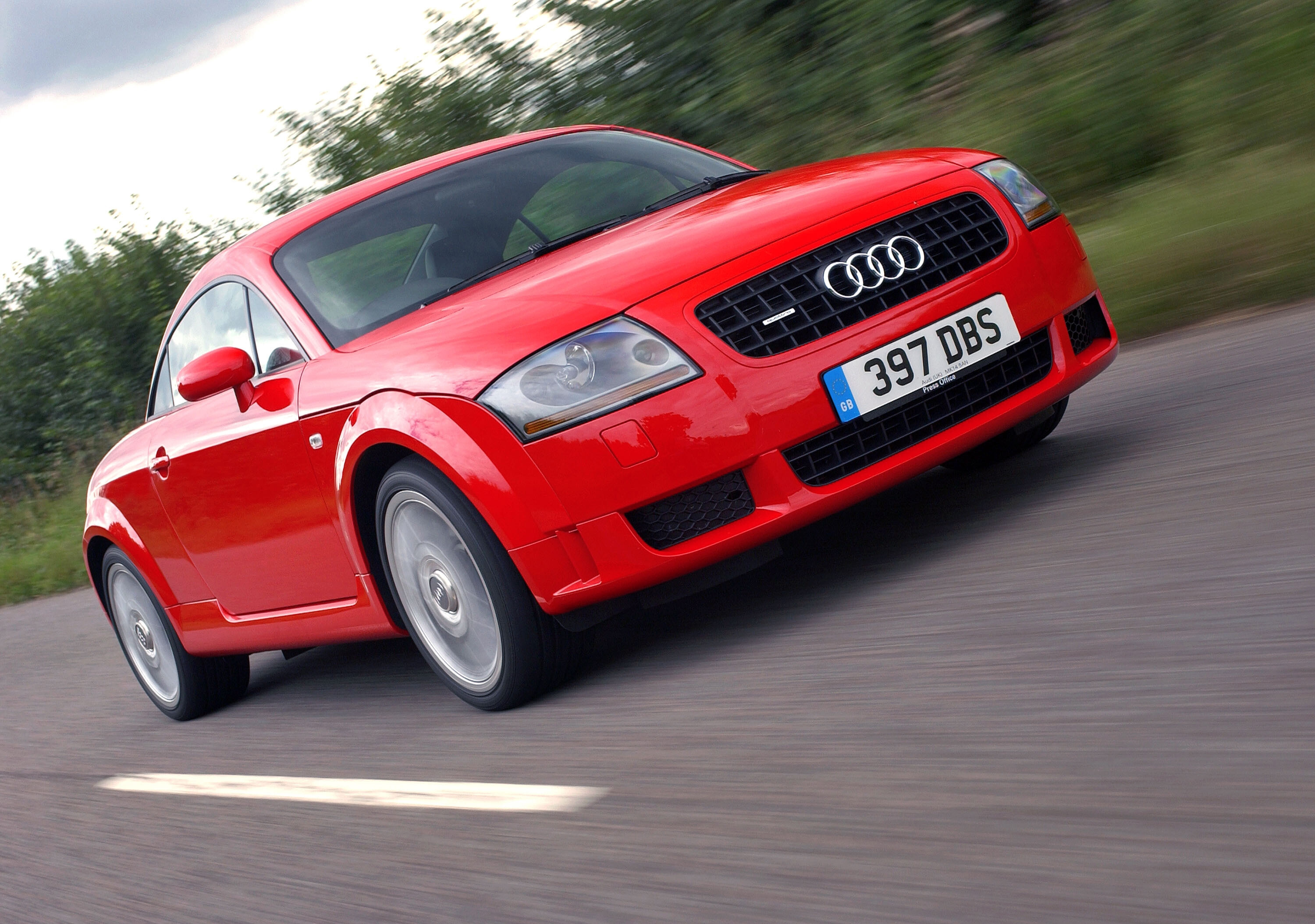
It’s hard to look at a point and isolate a shape without taking in the entire car as whole.
That waistline was high well before side-impact regulations dictated as such, while the roofline was also close to symmetrical from to rear.
The graphic on the front and the rear was also near identical – and the original, as aficionados will tell you today, did not have a spoiler to interrupt its rump.
In soft-top form – as it would remain for its entire 25-year production – the roll-over bars were made a focal point as rounded forms to become part of the design story.
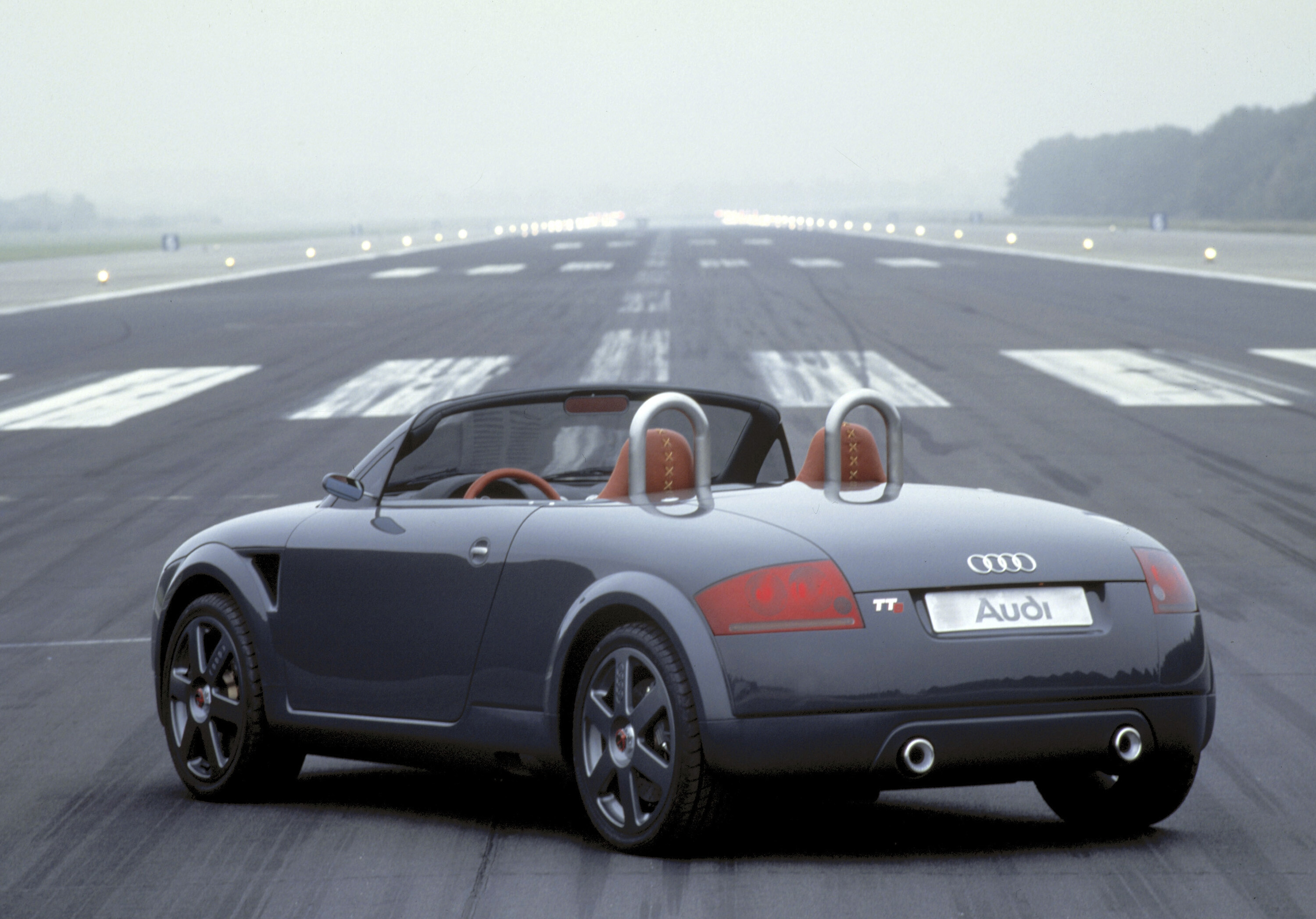
Somehow, despite its roundness, the TT was not a conglomerate blob – its wheel arches set 2.4 metres apart stretching its roofline to define its shape.
Nor did its design story end inside: the 2+2 seater’s aluminium fuel surround was complimented by the gear shifter, with its riveted look and brushed aluminium that continued on the triplicate circular air vents and even the door pulls.
The TT was not just a car for car enthusiasts: it spoke to designers, creatives, artists and those who admired depth and thinking beyond next month’s sales chart. Of course, that also meant turtle-neck wearers, and former Saab owners…
The original TT used the first generation A3 platform making it front-wheel drive – a dealbreaker for some purists at the time – when it arrived in 1999 using the Golf/A3’s a 1.8-litre four-cylinder turbo-petrol engine making a modest 132kW/253Nm.
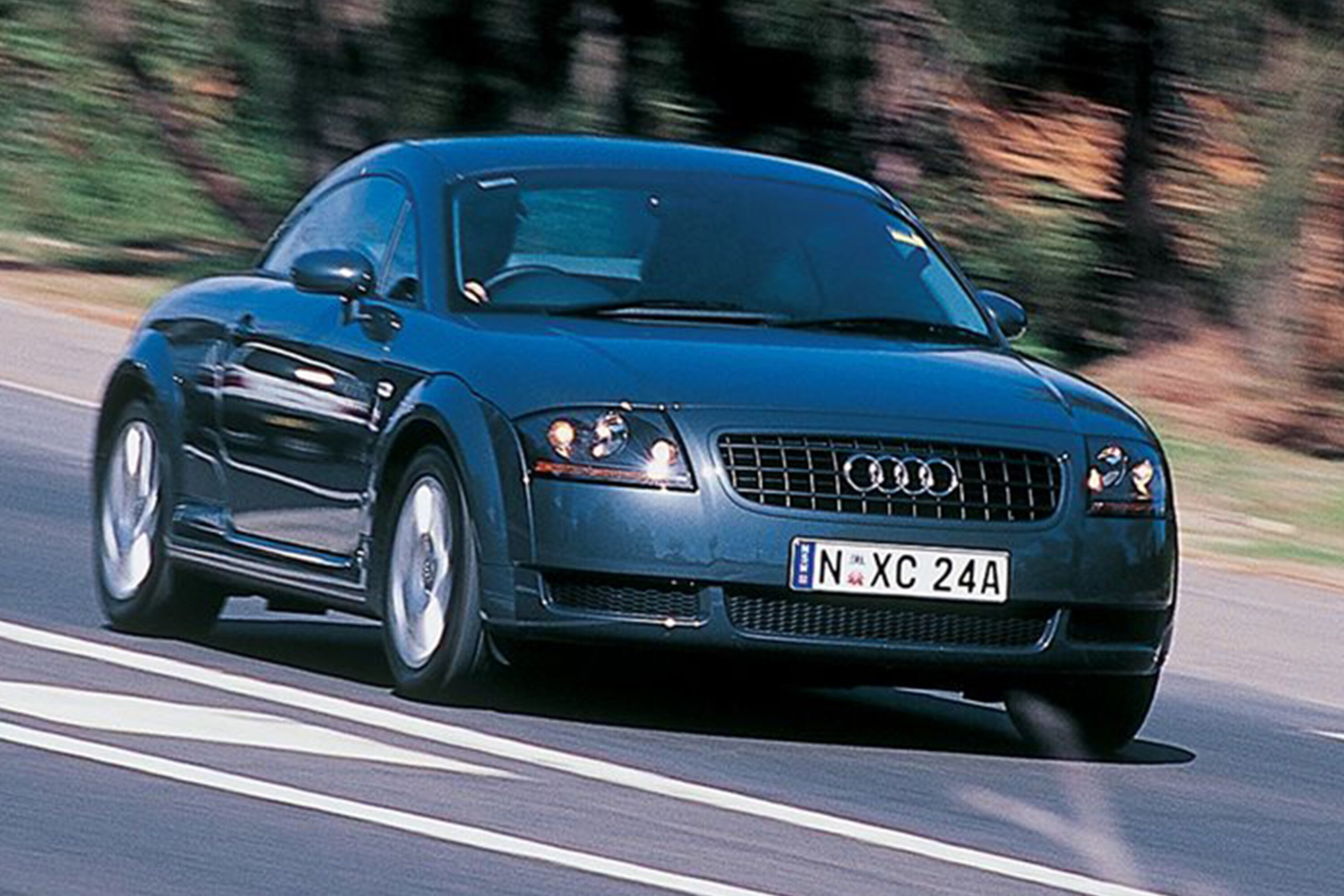
With no racing pretensions, the TT became an astute performance car in its own right after a significant early setback.
Blemishing the design to some fans, a rear wing was added in the year 2000 along with rear suspension changes (anti-roll bars, new wishbones and dampers) after five TT owners were killed in Europe, mainly at high speed in Germany [↗].
A blow for the all-new nameplate, the issue prompted a recall, dampening enthusiasm for the TT as Audi retro-fitted the parts to 40,000 examples already sold globally and making ESP, relatively new at the time, available at a lower price.
In Australia, it was sold in five-speed manual form only from 1999 – getting a sixth gear in 2004 – with an automatic option and Quattro version added in 2004.

In 2005, the 3.2-litre V6 taken from the raucous R32 Golf – 184kW and all – and fitted into the TT to arm the seductive coupe with a 6.7 second 0-100km/h time. The TT’s bark could finally match its bite.
The second-generation TT arrived in 2006 and carried on the design spirit in a marginally more aggressive package.
Trademark lines remained, including the clamshell bonnet shut that was interrupted by the front wheel arch; the high waistline; and brushed aluminium fuel-filler cap.
Even more aggressive powerplants arrived: the second generation delivered the first Audi TT RS Quattro.

The TT RS packed a 250kW Quattro-esque turbo five-cylinder with growl to boot.
It was overshadowed by the Audi R8 at the time, which went on sale in 2006 after the company invested in Lamborghini and used the Gallardo’s underpinnings for its own sports car.
The R8 the hero of the brand, race tracks and bedroom walls while the TT was stylish, but, erm, yeah…
That meant the TT was sorely underestimated as a performance car, as noted on the now defunct MOTOR magazine’s 2008 Performance Car of the Year.
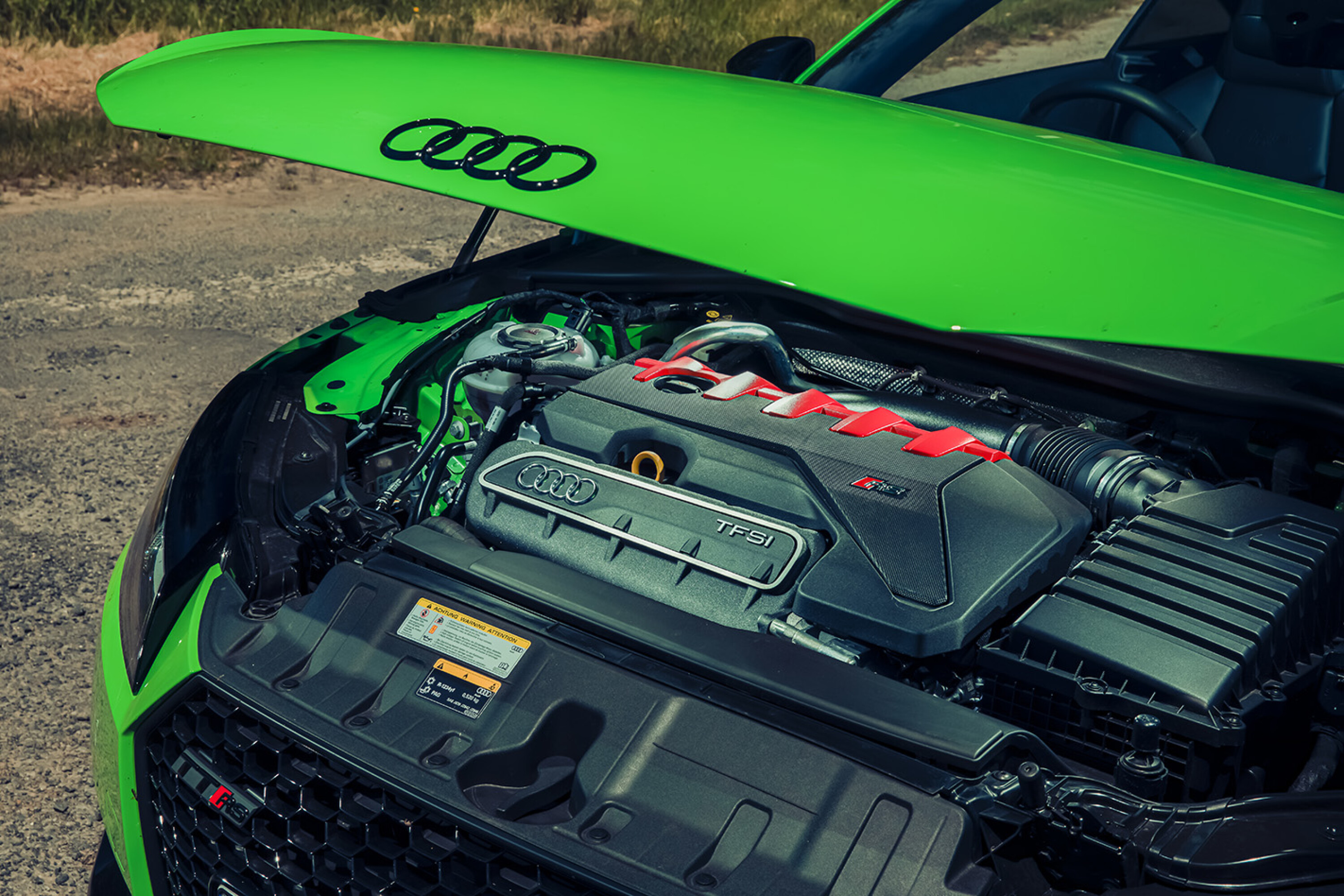
While not perfect, the TT was starting to climb to new heights – as was its price.
A bright orange TT S – not even the hero RS – with baseball glove leather was the packer’s pick, outpacing the Mitsubishi Lancer Evolution X down the quarter-mile and around Wakefield Park, where it handled with the same precision of its bodywork lines.
It was an upstart: how could something ape so much style yet perform more than superficially? While not perfect, the TT was starting to climb to new heights – as was its price.
The core elements of the TT remained throughout its quarter-century innings: the three curves – roof and wheel arches – teamed with that high waistline.
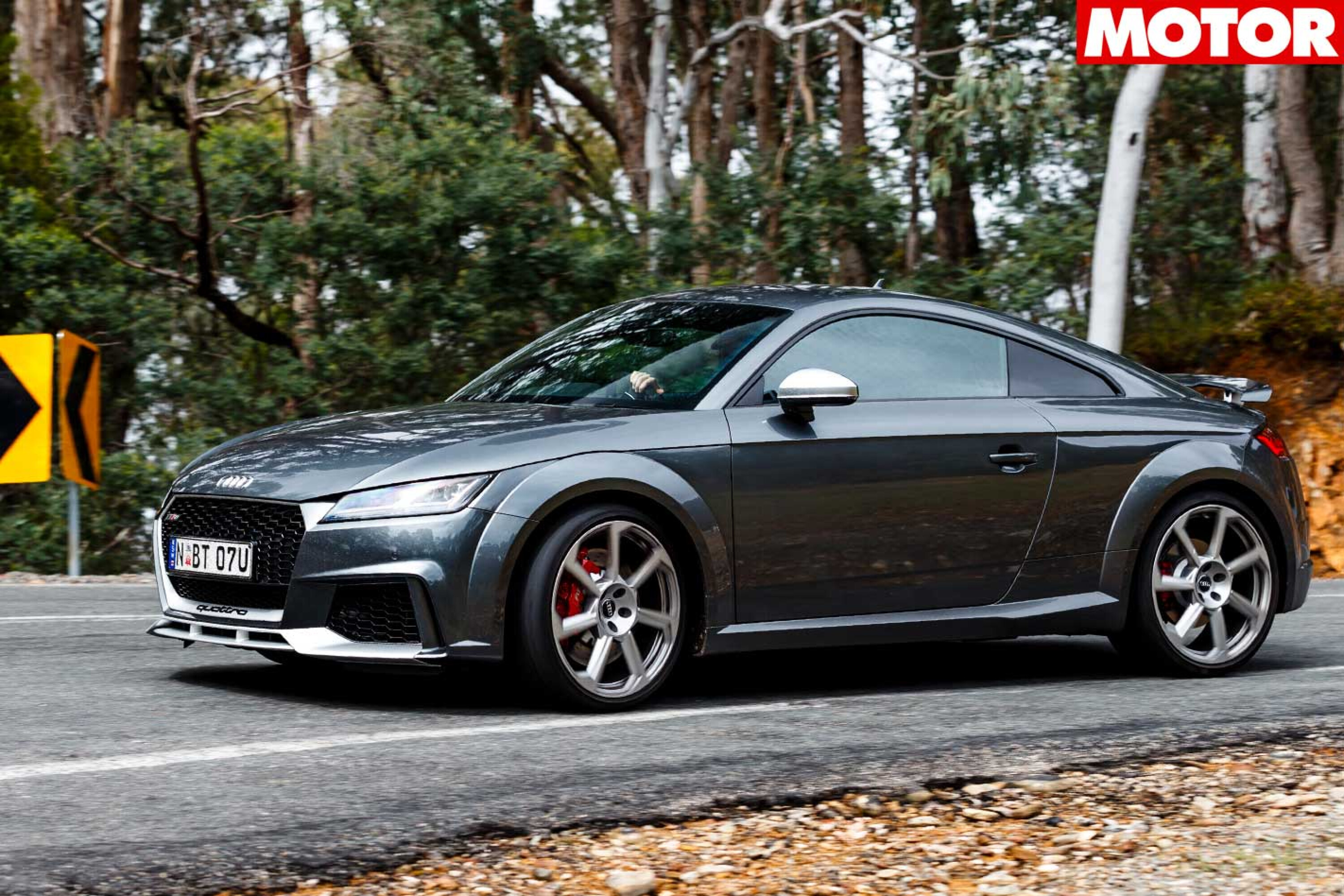
The third generation’s arrival in 2014 brought with it the fashion of the day – unlike the original’s disregard for convention – in a sharpened nose and angular taillights.
It was true to the organic lines of the TT playbook, but the playbook had moved on – and the square edges were not as convincing a fit for the Bauhaus design of the rest that gave the TT its identity.
The interior took the spirit of the original, though, eschewing a central touchscreen but without sacrificing modern creature comforts – the Apple CarPlay runs through the driver’s display, and its digital HVAC controls are elegantly integrated into physical dials. A masterstroke in minimalism.
Still fantastic to dive in its higher-spec versions, which again included an RS version, the TT name outlasted 1999 debutants such as the brilliant Honda S2000, and rivals such as the mixed-bag BMW Z3 and its M derivatives.
If the UR Quattro marked the Audi brand technologically, the TT defined it stylistically. It’s had its moment, and in a world of SUVs and ladder-frame pick-ups, we’re forever grateful.
We recommend
-
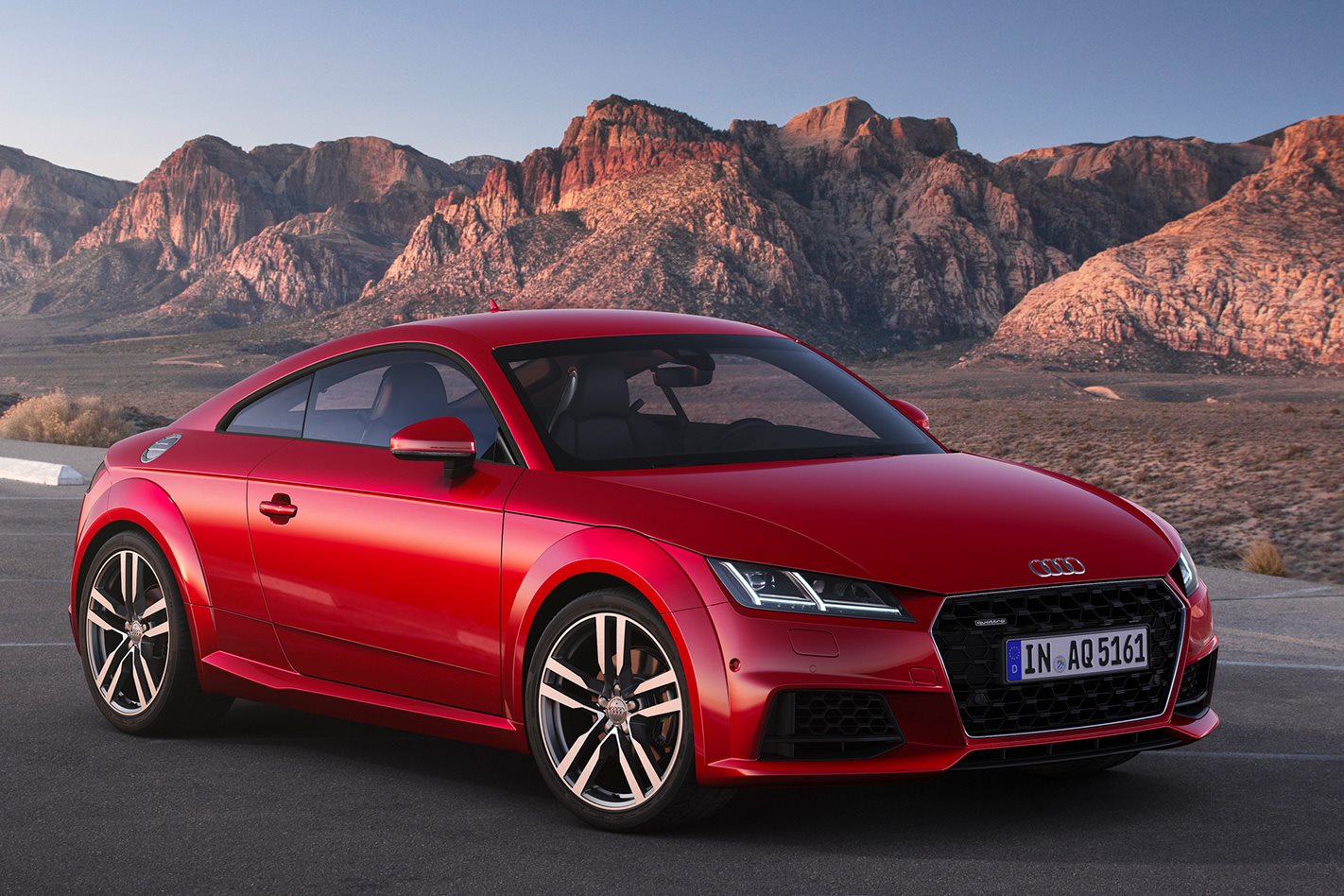 Features
FeaturesAudi TT – Evolution of the badge
Audi’s compact coupe was a revelation when it first appeared, and has steadily morphed from ‘secretary spec’ to ‘searing hot’ over the years.
-
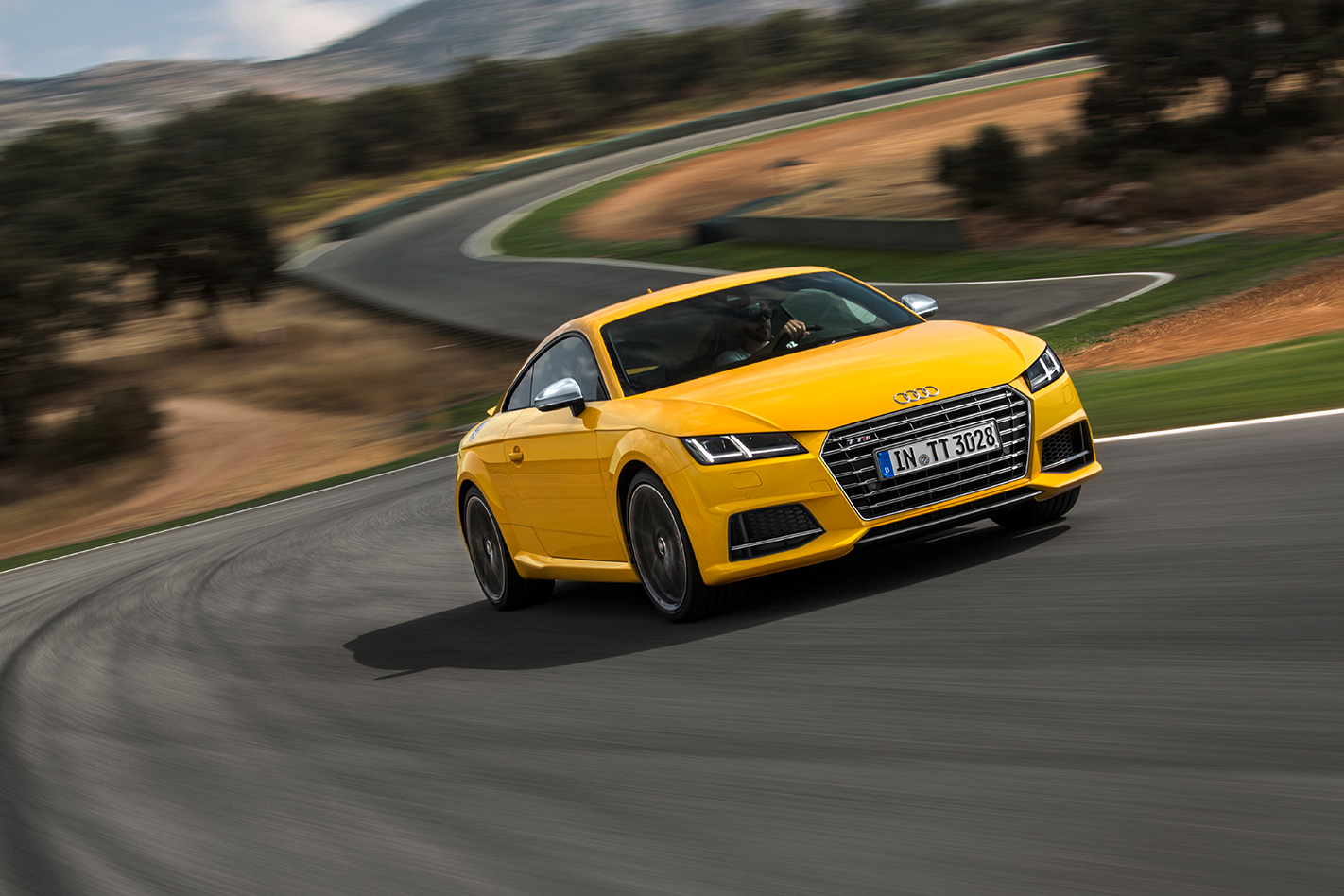 Reviews
ReviewsAudi TT first review
We drive the exciting third-generation Audi TT in Spain
-
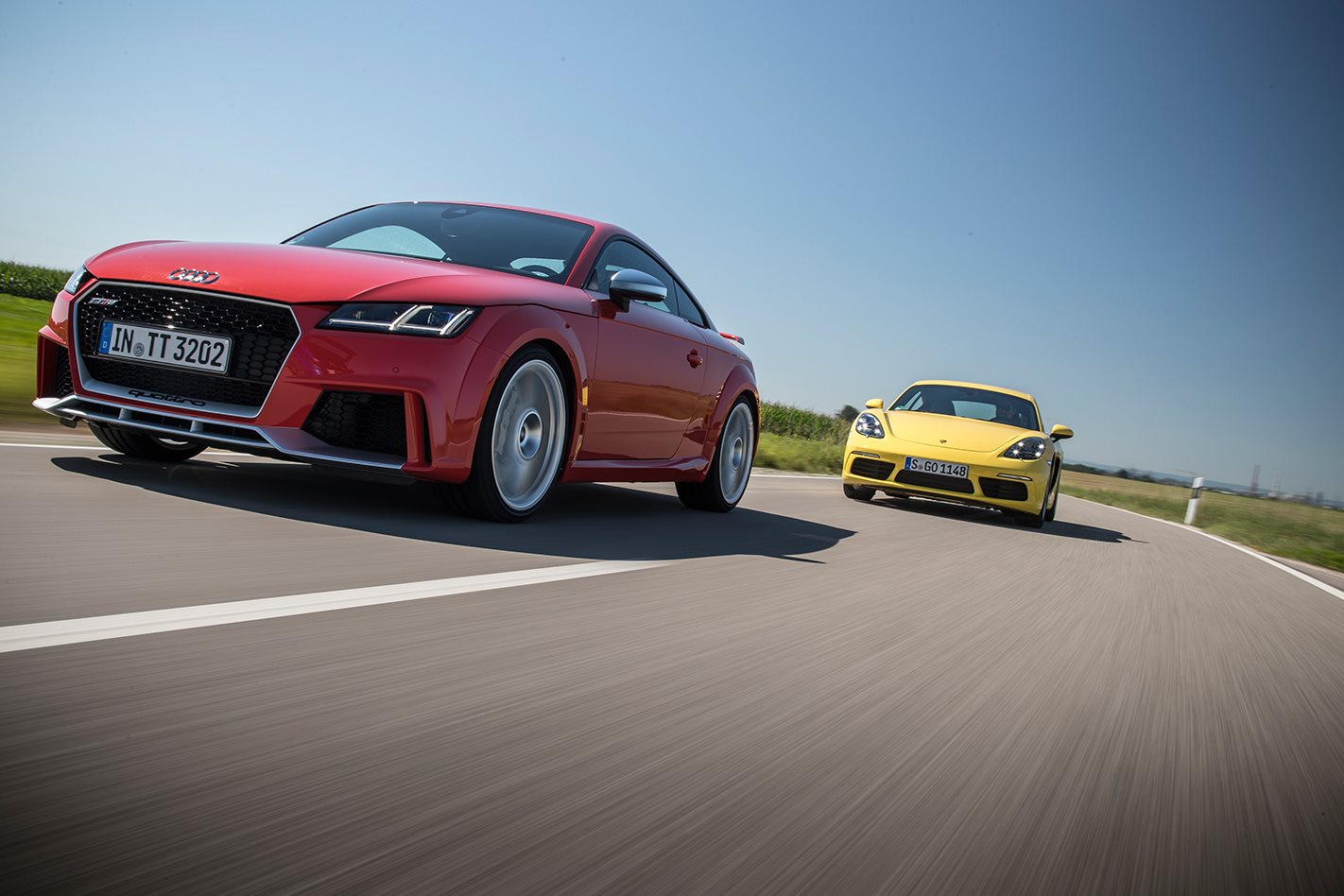 Features
FeaturesPorsche 718 Cayman S vs Audi TT RS
It's now an all-turbo affair between these two small German sportsters, but which receives the biggest boost from forced induction?




